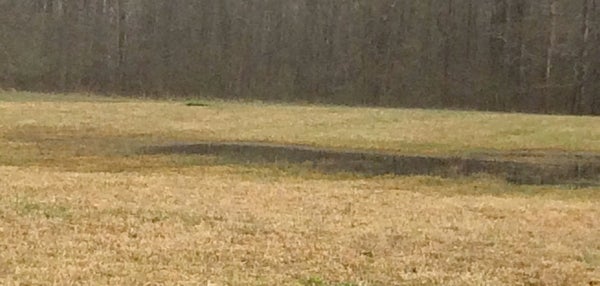Danelle Cutting: Some ideas for wet landscapes
Published 12:00 am Friday, January 1, 2016

- Cooperative Extension After recent heavy rain, many yards and other area are flooded, damaging the plants under water.
Every day, we are getting more rain and with that, I get more calls about how it will affect the gardens and lawns.
On my drive home, I see many yards with small ponds and large ponds overflowing since their overflow system is overloaded.
The warm weather we had doesn’t help with the questions either — it poses more issues if homeowners decide to do some lawn chores. Keep reading for a few helpful hints at making the best out of our current situation.
So, what can we do with all of this rain? Sometimes, it is hard to make light of a bad situation. We asked for rain when we were in drought. We are surely getting it. However, it is too much too quick, so how can we protect the plants we have?
That is a very hard question to answer. Many plants are drowning and will not be able to survive. What I will tell some people is to mark or remember where they have the most water and plant flowers, shrubs and trees in those locations that can withstand times of excess moisture.
You could also look at a rain garden design. Trees, such as a red maple or river birch, can tolerate moist soil. Beautyberry and sweet shrub are also great choices for shrubs.
One of my favorite perennials, Blue Star Amsonia, can withstand moisture for a considerable amount of time, as well as Rudbeckia. There are also some great ornamental grasses that you can place in locations that tend to hold moisture for long periods of time.
If you do not want to add plants, you can look into rain barrels to help harvest the excess rain. They are usually placed at the down spouts around the house and are used to store the rain to help irrigate plants without using municipal or well water.
You can create your own or purchase 50-gallon barrels, all the way up to 1,000-gallon cisterns. They are great when they are full but you will have mosquitoes, and the light colored tanks encourage algae.
Another thing to look out for is disease. When we have lots of moisture and humidity, we can have disease. Do not mow your lawns after a rainfall. This can help spread diseases throughout your lawn. Resist the urge to do this, even though the warm weather has encouraged lawn growth.
It is also best to refrain from tilling or digging in your moist soil. Tilling can cause compaction, which can cause further drainage issues.
If you have any questions about the excess rain, gardening questions or would like to know more about rain garden plants, contact your local Cooperative Extension Agent, Danelle Cutting, at 704-216-8970.




